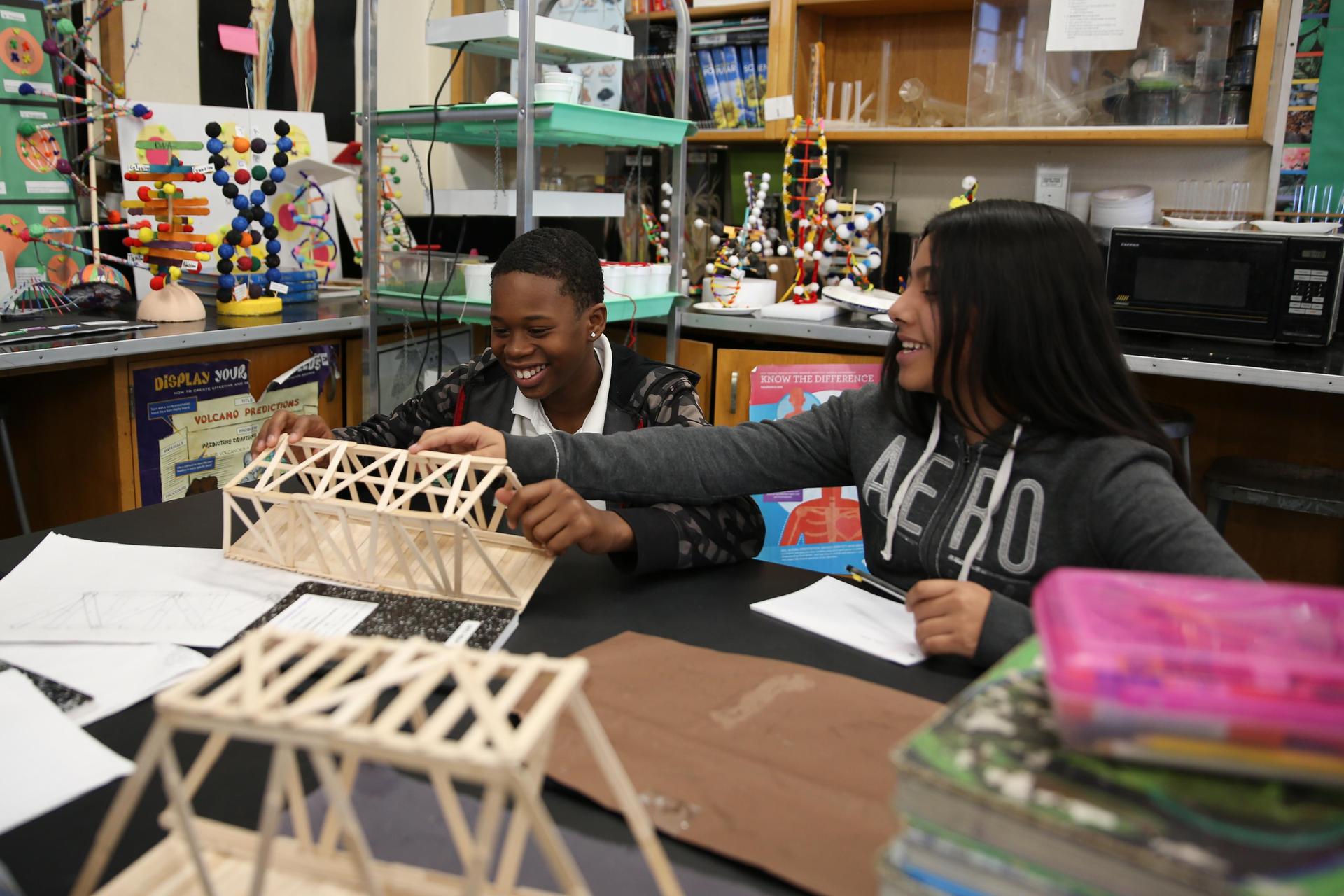Curriculum
IUSD Book List:
Elementary:
 Learn more about the academic journey your elementary school student will take during their time with us. Implementing an enthusiasm and curiosity for education at a young age is one of our main priorities.
Learn more about the academic journey your elementary school student will take during their time with us. Implementing an enthusiasm and curiosity for education at a young age is one of our main priorities.Mathematics: Understanding Concepts
During kindergarten through second grade, they focus on concepts and skills for addition and subtraction, emphasizing place value.
In third through fifth grade, they will focus on the concepts and skills for multiplication and division of whole numbers and understanding fractions.
By sixth grade, students will also incorporate geometry in solving real-world mathematical problems as well.
Science: Cause and Effect
Literacy: Building Blocks Journeys – A Path to Balanced Literacy
Journeys supports the Common Core State Standards into daily classroom instruction through high-quality literature, informational texts, and content that offers our students a wealth of opportunities to learn and fall in love with literature.
Our goal is to ensure all students are highly engaged in literacy and reading comprehension, and that all students are reading fluently by 3rd grade.
Health and Physical Education: Starting Good Habits
Fitness: Our younger students will demonstrate motor skills and movement patterns required to perform at a variety of physical activities, based on their age and level of development.
We teach what fitness is and why it is important to improve health and performance. Students participate in activities that are enjoyable and challenging and will be part of moderate to vigorous activity three to four days per week.
Social Studies: Introducing Our History
Elementary school students are introduced to the geographic and historical connections between the world today and the world long ago. We use the classroom as a reflection of our society and teach good sportsmanship and respect for the rights of others.
Students will also learn about historical figures who have shaped the world we live in today, and also the government’s role in both history and the modern day. They will explore the connections they have with the past, and also learn about the story of their home state.
Technology: Exposure To Tech
Art: Young Artists
Teachers always remain sensitive to students’ self-expression and include activities and projects that the students can relate to and are interested in. There should be a balance of student-created work, and art directly curated by the teacher.
Music: Young Musicians
Music instruction according to the five strands allows young students to use a variety of instructional resources in exploring music experiences: singing, moving, playing an instrument, listening, responding, and reflecting.
Included among the resources are age-appropriate musical instruments, written literature on music, CDs, computer software, Internet resources, audiotapes, videos, DVDs, and photographs, all of which are often obtained through the school library.
World Language: Early Introduction
Learning a foreign language is very important to our young learners because it can improve their education while also giving them the foundation for personal enrichment, academic achievement, and economic opportunities.
Middle School
High School
Special Support Programs
Special Education




 Take a look at the academic expectations we set for your middle school child while attending IUSD. This is the time for students to discover some of their personal interests and passions, and prepare for success in high school.
Take a look at the academic expectations we set for your middle school child while attending IUSD. This is the time for students to discover some of their personal interests and passions, and prepare for success in high school.